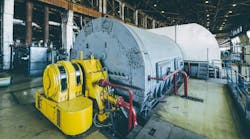Dec. 20, 2013 -- The acquisition of water and wastewater products in the global chemical and pharmaceutical industries is expected to grow substantially within the next several years, according to recent reports published by market research organization The McIlvaine Company.
In Sedimentation & Centrifugation World Markets, research indicates that chemical manufacturers will spend $440 million in 2014 for centrifuges, clarifiers, hydrocyclones, and dissolved air flotation (DAF) systems. Further, the pharmaceutical industry demands for ultrapure water (UPW) for injection, cleaning process equipment and other uses will result in purchases close to $500 million by 2017, up from $425 million this year, as noted in Ultrapure Water: World Markets.
According to the reports, the largest growth for both sectors will be seen in Asia. The chemical industry will likely see development due to major capital expenditures for plants manufacturing basic chemicals, and the pharmaceutical industry will possibly see expansion from a construction boom centered on generic drug manufacturing. As such, major global drug companies are building generic production facilities in China, India, and other Asian countries.
Chemical Industry
For the chemical industry, centrifuges are predicted to be the leading purchased product, with decanter or scroll types used for dewatering of slurries and disc types used for several process applications, separating both solids from liquids and liquids from liquids. Both centrifuge types are complex machines requiring significant capital investment in manufacturing facilities.
The sedimentation and centrifugation revenues for 2014 include $8 million for Africa, $131 million for Europe, $140 million for America, and $161 million for Asia. The lower cost of energy is encouraging chemical industry growth in the U.S., but the opposite effect is occurring in Europe.
There is also considerable knowledge and experience needed to support the operators. As a result, a few large international companies achieve high market share, including European businesses such as Alfa Laval, GEA, Andritz, Pieralisi, and Flottweg. The top five companies have more than a 65 percent market share, whereas the top 20 corporations have a 90 percent market share. By contrast, the largest clarifier supplier has a minor percent of market shares.
These revenues do not include repair parts and services. Due to the complexity and high rotational speed of centrifuge elements, the original equipment manufacturers (OEMs) have garnered a high percentage of the repair-part business. When this opportunity is included, the market nearly doubles.
Pharmaceutical Industry
As for the pharmaceutical industry, the McIlvaine forecast includes hardware such as filters, piping, pumps, and instruments, as well as consumables such as membranes and ion-exchange resins. In general, the contamination prevention demands in this industry are so great that specially-designed hardware and consumables are necessary in order to provide efficient services.
Ultrapure water (UPW) expenditures in this market are predicted to escalate from around $425 million in 2013 to nearly $500 million by 2017. Trends driving the rapid growth in the Asian UPW market include the increasing ability to purchase drugs; past low per capita expenditures; a new focus on health care; and stricter restrictions that are forcing more UPW expenditures per unit of production.
One of the areas of greater investment is in measurement and control. Better instruments to measure contaminants and flow, along with software to optimize processes, are allowing pharmaceutical plants to achieve better contamination control at a reasonable cost. Likewise, smart pumps and valves that report their condition further the optimization potential.
There are also equipment improvements such as electrodeionization and membrane contractors for gas removal, as well as consumable advances including reverse osmosis (RO) membranes that achieve greater efficiency at comparable energy consumption.
###

